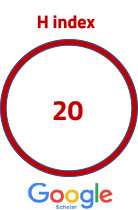| Acceptance rate | 46% |
|---|---|
| Time to first decision | 20 days* |
| Time to decision with review | 50 days* |
*Approximate number of days
**The days mentioned above are averages and do not indicate exact durations. The process may vary for each article.
ACTA Pharmaceutica Sciencia
2021 , Vol 59 , Num 2
Developing, Optimization and In vitro Evaluating of Three-layers Floating Dipyridamole Film in Hard Gelatine Capsule
1 Topkapı Health Social Security Center, Topkapı, 34035, Istanbul, Turkey2 Bezmialem Vakif University, Faculty of Pharmacy, Pharmaceutical Technology Department, Fatih, 34093, Istanbul, Turkey
3 Istanbul University, Faculty of Pharmacy, Pharmaceutical Technology Department, Beyazıt, 34134, Istanbul, Turkey
DOI : 10.23893/1307-2080.APS.05915 Dipyridamole's bioavailability decreases with increasing gastric pH. To overcome this problem it was planned to prepare three-layered floating Dipyridamole films by floating enhancers and release controlling polymers for remain buoyant in the stomach. It focuses on the development and in vitro evaluating of the floating film in hard gelatine capsule through the design of experiment using different hydrophilic polymers, hydroxypropylmethylcellulose (HPMC) K4M and hydroxyethylcellulose (HEC). The amounts of HPMC K4M and HEC were independent variables, affecting film formulations found as 0.242 g and 0.337 g, respectively. The thickness of films, swelling index and percent of drug release in 4th hour were dependent variables found as 2.44±0.09 mm, 137.9%±1.11% and 67.07%±3.28%, respectively. In conclusion, the best fitted kinetic model was the Higuchi model where the drug release was controlled by diffusion, and optimized floating film formulation could be offered as a promising strategy to increase the bioavailability of Dipyridamole. Keywords : Dipyridamole, Design Expert, Floating film, In vitro release, Swelling index





